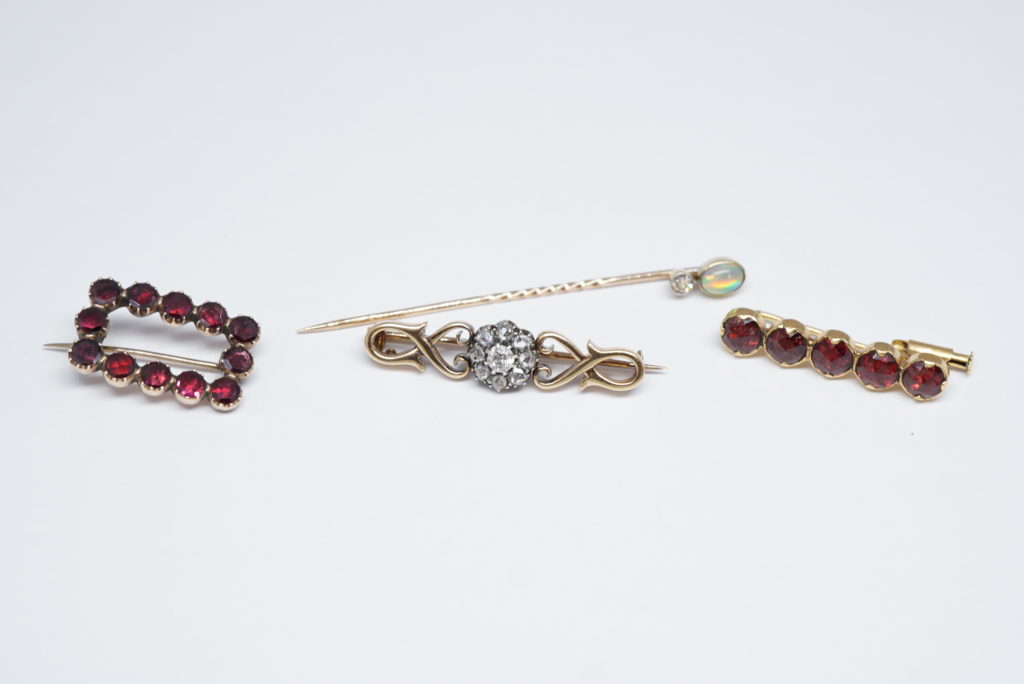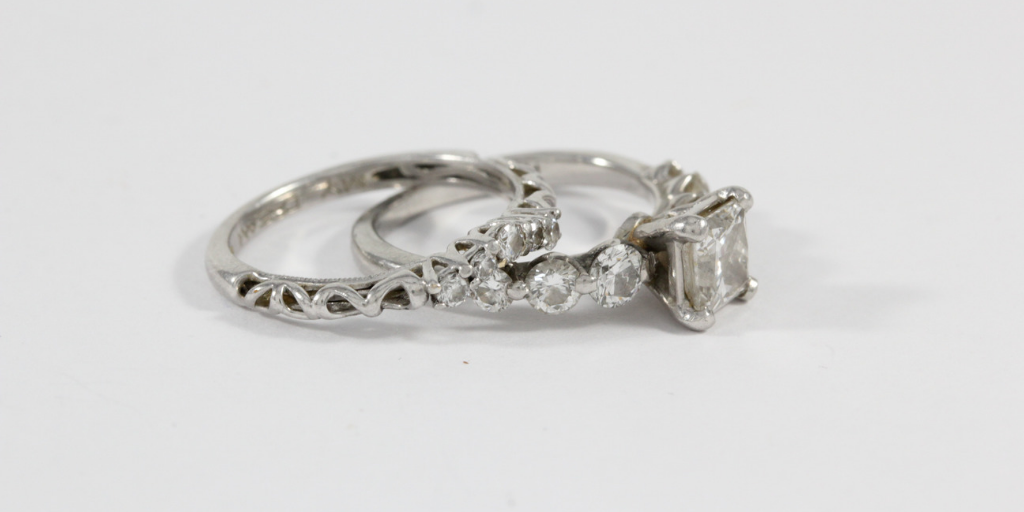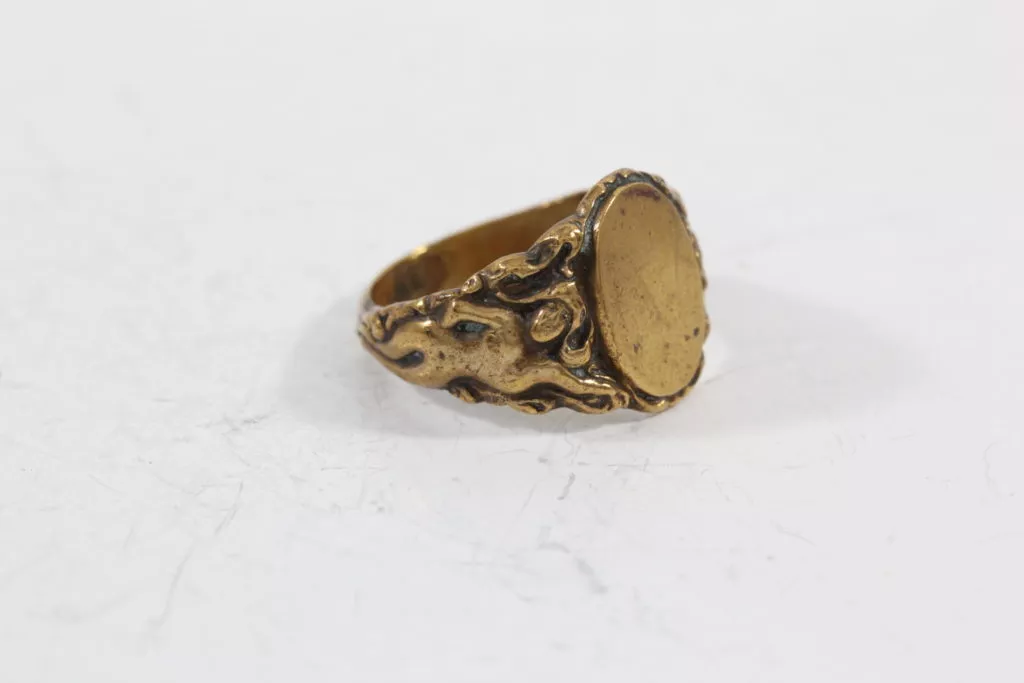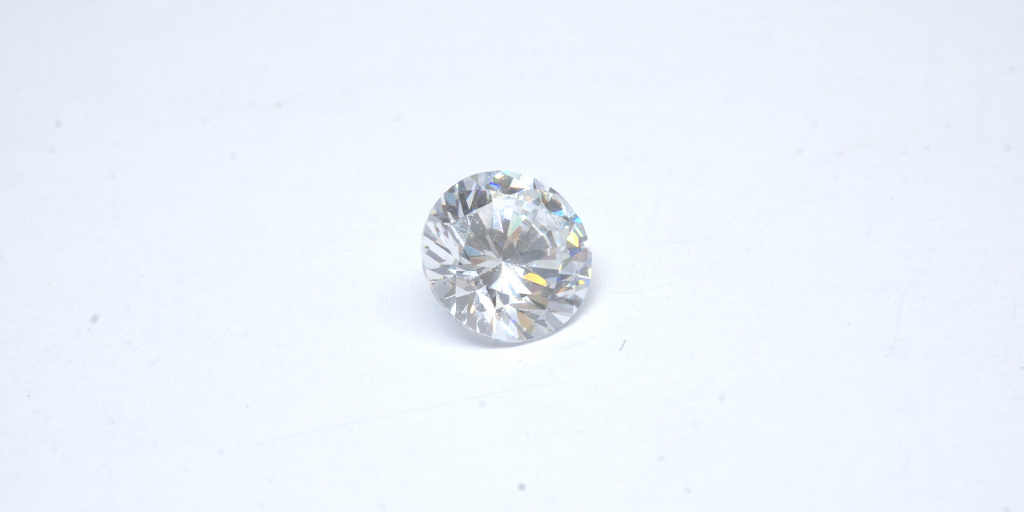How to Monetize Your Jewelry Hobby
Written by Annabelle
April 8, 2020

If you’re a self-proclaimed jewelry lover who can’t resist snatching things up as you’re prowling Etsy, Ebay, and Rubylane, we’ve got some good news for you. Jewelry is one of those unique art forms that can be traded, just like playing cards- and that can translate from impulse shopping to a lucrative dealing service once you’re in the know. Nowadays, having an extra source of income definitely wouldn’t hurt- read on to learn how to monetize your jewelry hobby.
How Can You Turn Jewelry Collecting Into a Business?
You might be looking at your boxes and boxes of items, skeptical as to how you’re going to turn your jewelry hobby into more treasure. But think about it- you clearly bought them because you love how they look, and there’s guaranteed to be someone out there who’ll think the same way as you. So start selling the items you don’t wear any more to get some cash and clear up some space (for more shinies!)
You could just start taking pictures of the items as is and throwing it up on Ebay, but is that really the best way to get the most bang for your buck? If you want to play the long game and go from jewelry hobby enthusiast to full-fledged jewelry dealer, here’s what you need to know.
Step 1: Understand Yourself as a Jewelry Seller
Before you jump into this business, it’s essential for you to collect your information and do your homework. As with any good businessperson, you need to understand your strengths, your focus, and your competitors. Here’s a breakdown of what you should analyze:
- Your niche: Are you a fan of all things David Yurman? Does your collection scream Victorian mourning? Or perhaps you’re an expert on all things that fall into the category of retro costume jewelry. If your jewelry hobby specializes in one area, make it yours, and use it as the foundation for your business. This is essential for you to brand yourself as the number one expert of that particular kind of jewelry.

An antique Victorian hair pendant.
If you’re an equal opportunity jewelry lover, then you’ll have to make sure you reflect that diversity in a way that won’t confuse your potential customers. Categorizing your items by style or price point will help sort out your inventory and allow both you and your customers to make sense of what’s available for sale. - Your resources: To start buying, selling, and refurbishing jewelry, there are a few things you need to work on. One is your capital and expected return on investment; don’t just go and buy a whole bunch of vintage pieces for fixing up if you’re not entirely sure that people will purchase. After all, you’re starting off as a blip on the market. Set a realistic goal for yourself on how much you expect to spend on purchasing inventory and restoration, matched by another goal for sales.
Next, take stock of your connections. If you’re buying estate David Yurman jewelry, is there another vendor who may be selling cheaper but damaged stock? Would it be more worth it to purchase from them instead if it can reduce your expenses? Always keep feelers out for pricing, as you want to be as cost-effective as possible.
The same goes for your jeweler. You don’t want to waste a lot of money with someone who exorbitantly overcharges you and then ships your pieces off to another repair facility instead of doing it themselves in-house. Opt for working directly with that repair facility; companies like us are the usual hub of jewelry repairs for local and chain store jewelers all across the country. Pricing is usually much less expensive and wholesale prices are even available as you increase your volume of items. - Your price point: While business is always about money and the jewelry industry is notorious for having great markups, don’t be too greedy when it comes to pricing. After all, you need to have a realistic competitive edge, and if your competition is selling similar rings at $300 while you’ve priced yours at $700, chances are they’re going to make the sale.
Setting a price is a tricky business, and you’ll need to analyze if you’re covering all your expenses, making a profit, and competing with your rivals at a fair price. If you want to edge out the competition, consider adding product offerings provided by your jeweler, such as engraving, ring resizing, and appraisals. Depending on how you add them, you can close that sale, and even add a couple of extra bucks to your business.
Step 2: Start Setting It Up
First, come up with a name for your business! You can use your own name, or draw inspiration from what started your jewelry hobby in the first place. Make sure you’re really in love with it, because changing it back and forth can hurt any established branding further down the line if you constantly flip flop.
Next, create your own website and cross post on Etsy, Ebay, or Rubylane to test the waters. You want to establish your own site in order to make sure that URL is yours, and if your business grows bigger and bigger you’ll need an online home base for branding! Etsy, Ebay, and Rubylane are selling platforms that may help you with advertising and reaching a larger source of customers, who are already actively using those websites for shopping.
Finally, make sure to market yourself! Create social media accounts and be involved in the community. The jewelry community is tightly knit, and even though they’re technically in competition many sellers are actually good friends and even customers of each other’s business. This is especially true with antique sellers, who specialize in unique, one-of-a-kind pieces similar to rare baseball cards. Oftentimes, when a seller releases something from her personal collection, her other seller friends are already poised to snatch it up for their own jewelry box! Developing relationships and even partnerships with people in the community will help you keep an eye on the market, as well as supplement your business. You can even consider joining forums and groups like Ganoskin, or Jewelers Helping Jewelers.
Step 3: Take Stock of Inventory
Go through everything you have, and sort them out. What’s ready to sell? What needs refurbishing? Separate your items, and once you have your repair pile it’s time to do some research. Examine each piece and check out how much each one would sell for, in comparison with similar pieces online. Even for the damaged ones, determine how much you’d sell them for in good condition. This will give you an approximate idea of how much you want to spend on repair in order to justify sending it off.
- Find a good jeweler: You’ll have to shop around and compare prices again, but getting a jeweler who can do the work properly at a reasonable price is important. Building a relationship with this jeweler can help you greatly expand your jewelry business. A few things to look for, aside from their price list, is capability- not all jewelers are equal, and some are far better than others. You want to make sure that the jeweler you work with is one who is trustworthy and experienced with your product.

A gold-filled enamel locket that was missing all of its seed pearls before replacement.
For example, we work with a variety of niche clients who sell antique Victorian jewelry and vintage costume designer jewelry. These items are not straightforward to fix, thanks to their unique materials and designs. However, our jewelers are extremely experienced with items from these categories, ranging from antique gold-fill locket restoration to vintage rhinestone replacement. Our familiarity with certain jewelry designers also allow us to restore the item as closely as possible to its original look, for maximum resale value.
Aside from familiarity with your product, don’t just explore their repairs capability! Jewelry facilities like us offer a broad range of services that you can add to your differentiation arsenal. For instance, if you happen to sell a lot of engagement rings, it’d be in your best interest to have a jeweler who can offer custom engraving. Get creative; your jeweler is going to be your best business friend and an overwhelming educational resource for you as you go past dipping your toes in the jewelry world. - Take pictures: Once you’ve gotten your items back, make sure to take good, clear pictures. Ideally, shooting on a plain white or black background in good lighting is the best way to depict your item. You don’t necessarily have to get fancy with the photography, but if you have a shaky hand, reach out to someone who can get a clear shot for you. With jewelry, the depiction of the item is the most important way to get a client, and if your picture is looking more like an abstract painting than a product photo, you’ll need to straighten that out before you post your listing online.
Step 4: Create an Aftersales Routine
Don’t think you’re done right after you’ve made your first successful sale. Good business owners ask for feedback and check in on their customers. This is especially true with jewelry- you could be selling to a fellow collector who absolutely loves what you have to offer. If you can, establish a rapport and these customers will become repeat customers, increasing your profit.
- Offer a warranty: You might think that this will hurt you, but you can adjust your price range to accommodate for a certain period of time to get repairs in. This helps you to close sales as customers will purchase with reassurance, and protects you when you’re selling used items. After all, you never know what people do with their jewelry.
- Offer sizing services: People lose weight, gain weight, get pregnant- the scenarios are endless. Communicate to them that they can bring any ring back for sizing (with a small fee) so that they’ll feel taken care of, and you can earn some extra money.
Starting your own business can be a daunting process, but you’re already halfway there with your enthusiasm about your jewelry hobby! You’ll find that it can be lucrative, challenging, fun, and deeply rewarding, especially as you work closely with customers. After all, jewelry is a highly personal item, and the satisfaction from a client in love with a piece, to a newly engaged couple with just the right ring, is something even money can’t buy. Get started today and contact us if you’re looking for just the right jeweler to supplement your jewelry hobby-turned-business!


